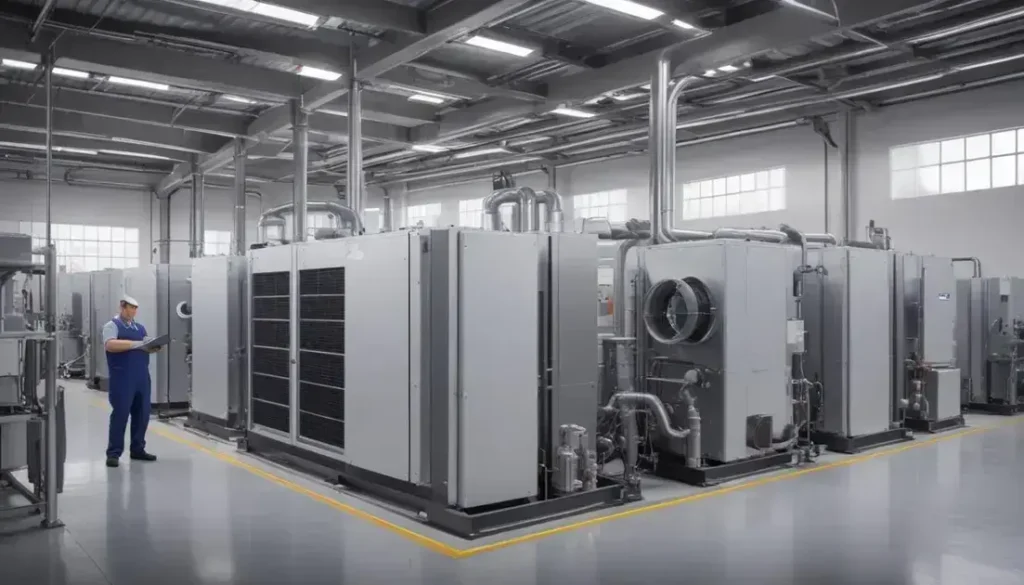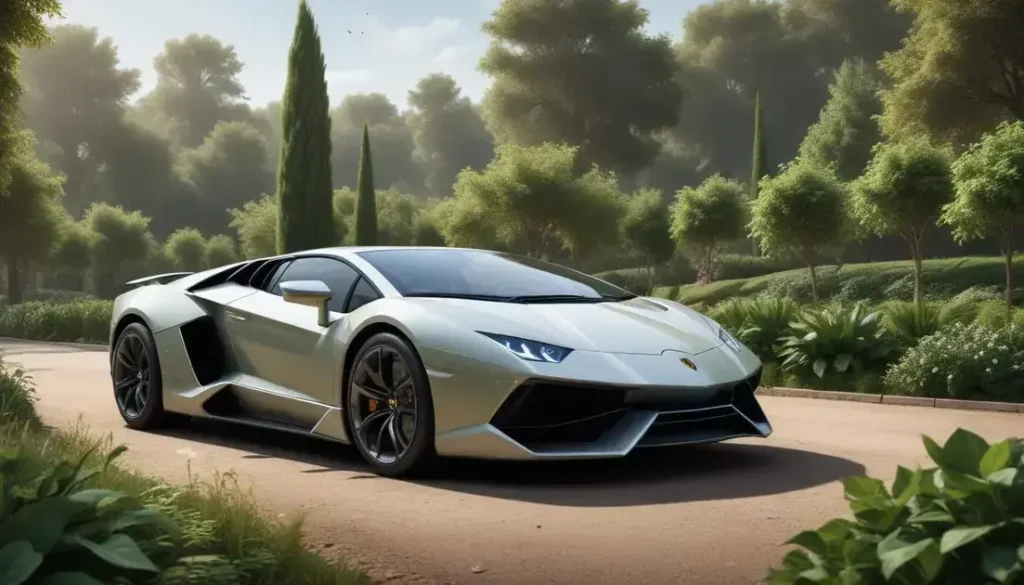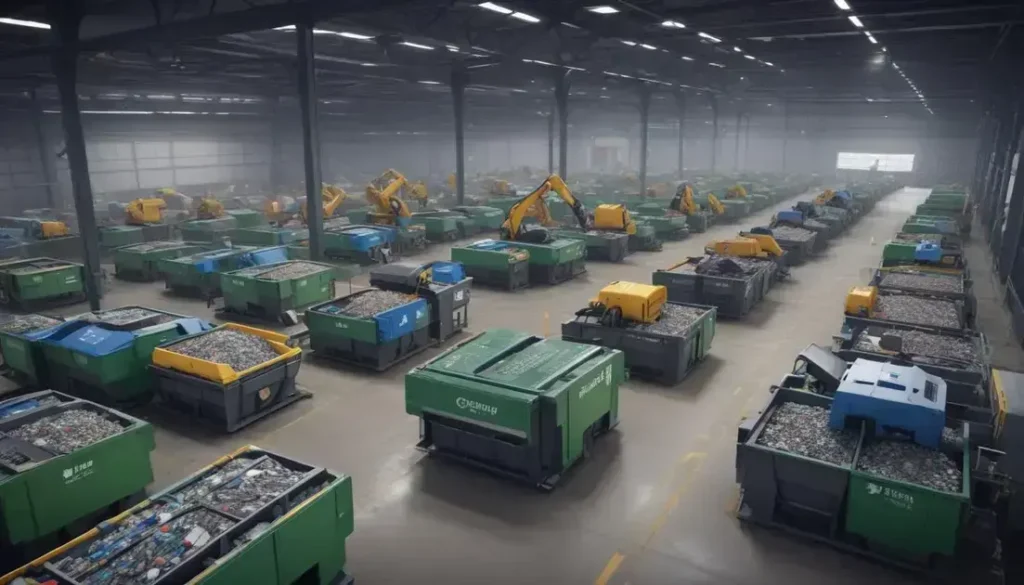Lamborghini is committed to sustainability through the development of hybrid and electric vehicles, transparent emissions reporting, and collaboration with local suppliers to minimise environmental impact and support regional economies.
In Lamborghini’s first Sustainability Report, the company underscores its **sustainability** commitments while grappling with emission increases. How does this shape the industry?
Introduction to Lamborghini’s First Sustainability Report
Lamborghini’s first Sustainability Report marks a significant commitment to sustainability in the luxury automotive sector. This initiative aims to address environmental challenges while enhancing brand reputation among eco-conscious consumers. Within the report, Lamborghini outlines the steps taken towards a more sustainable future, highlighting their transition towards hybrid technologies.
A central focus of the report is the company’s approach to reducing emissions. With a detailed analysis of Scope 1, 2, and 3 emissions, Lamborghini provides transparency regarding their carbon footprint. This data reflects an understanding of the need to balance luxury with environmental responsibilities.
Additionally, the report emphasizes innovation in manufacturing processes. By integrating sustainable materials and practices, Lamborghini aims to minimise waste and resource consumption. The commitment to engaging with local suppliers further illustrates their dedication to fostering a sustainable supply chain.
The report serves as a vital communication tool, aimed not only at customers but also at stakeholders and investors. Lamborghini’s proactive stance highlights their recognition of the luxury sector’s role in climate action and regulatory compliance, setting a precedent for others in the industry to follow.
Highlights of Lamborghini’s Initiatives
Lamborghini’s commitment to sustainability is demonstrated through various innovative initiatives aimed at reducing their environmental impact. Central to these efforts is the production of hybrid models, which combine performance with efficiency. This shift not only meets regulatory standards but also appeals to environmentally conscious consumers.
A significant highlight is Lamborghini’s focus on carbon neutrality. The company has set ambitious goals to lower its overall emissions, with a clear roadmap for achieving this by 2025. Notably, they plan to transition to 100% hybrid models in the near future, showcasing their dedication to sustainable engineering.
Moreover, Lamborghini’s choice of materials plays a crucial role in their sustainability efforts. The brand is committed to sourcing materials that are not only luxurious but also sustainable. This includes the use of recycled composites and responsibly sourced leather, reducing their reliance on non-renewable resources.
In addition to product innovations, Lamborghini is enhancing its manufacturing processes. The introduction of energy-efficient technologies in their production lines aims to minimize waste and control energy consumption. By embracing renewable energy sources, such as solar power, Lamborghini is taking significant steps towards a cleaner future.
Impact of Hybrid Transition
The hybrid transition at Lamborghini signifies a crucial shift towards more sustainable automotive practices. This change is designed to balance the brand’s high-performance legacy with the growing demand for eco-conscious alternatives.
By integrating hybrid technology, Lamborghini aims to reduce its carbon footprint while maintaining the exhilarating performance that enthusiasts expect. The hybrid systems optimise engine efficiency, resulting in lower emissions without compromising on speed or power. This innovation addresses environmental concerns and aligns with global trends in automotive sustainability.
Another significant aspect of this transition is the appeal to a broader market. As awareness of climate change rises, consumers are increasingly seeking luxury vehicles that reflect their values. The hybrid models position Lamborghini as a leader in the luxury segment, engaging eco-conscious consumers who desire high-end performance without the guilt of contributing to pollution.
Furthermore, the investment in hybrid technology showcases Lamborghini’s dedication to innovation. Continuous research and development efforts will involve enhancements in battery technology and electric propulsion systems, paving the way for future advancements. This evolution not only elevates Lamborghini but also sets a benchmark for other luxury brands to follow in embracing greener technologies.
Emissions Overview and Context
The emissions overview provided in Lamborghini’s Sustainability Report highlights the importance of transparency in environmental impact. The report details the company’s emissions across Scope 1, 2, and 3, illustrating a comprehensive understanding of their carbon footprint.
Scope 1 emissions include direct emissions from owned or controlled sources, highlighting Lamborghini’s operational challenges. These emissions primarily stem from manufacturing processes, where performance and efficiency intertwine with sustainability goals. Scope 2 emissions focus on indirect emissions from purchased electricity, underscoring the necessity for energy-efficient practices.
More significantly, Scope 3 emissions encompass all other indirect emissions in the value chain, including the sourcing of materials, product use, and disposal. Addressing these emissions presents a formidable challenge, yet it is crucial for achieving true sustainability. This segment emphasizes Lamborghini’s shift toward sustainable sourcing, ensuring that both raw materials and production practices align with their environmental responsibility.
By providing a detailed emissions overview, Lamborghini not only acknowledges the challenges involved but also commits to implementing strategies that effectively reduce their overall impact. The company’s focus on transparency sets a precedent within the luxury automotive sector, encouraging other brands to adopt similar practices in the pursuit of sustainability.
Details on Scope 1, 2, and 3 Emissions
Lamborghini’s Sustainability Report provides an in-depth analysis of its emissions across Scope 1, 2, and 3. Understanding these scopes is vital for assessing the company’s environmental impact accurately. Scope 1 emissions refer to direct emissions from owned or controlled sources, primarily arising from manufacturing processes and company facilities.
These emissions are crucial to monitor, as they directly relate to the operational activities of Lamborghini. For instance, enhancing energy efficiency in the production line can significantly reduce these emissions while maintaining high performance standards. Scope 2 emissions, on the other hand, consist of indirect emissions from the generation of purchased electricity. Here, Lamborghini focuses on sourcing renewable energy to diminish its carbon footprint.
The most extensive category, Scope 3 emissions, includes all other indirect emissions throughout the value chain. This encompasses emissions from the extraction of materials, product transportation, and vehicle usage by consumers. Addressing these emissions presents substantial challenges, yet Lamborghini is committed to sustainable sourcing and close collaborations with suppliers to reduce their overall impact.
By categorising emissions in this way, Lamborghini not only adheres to industry standards but also sets a higher bar for transparency and accountability. This approach clearly demonstrates their commitment to achieving meaningful progress in sustainability.
Sustainable Practices in Manufacturing
Lamborghini’s approach to sustainable practices in manufacturing is a cornerstone of its commitment to environmental responsibility. The brand invests heavily in advanced technologies that enhance efficiency while reducing waste. Automation plays a vital role, enabling precise manufacturing processes that minimise errors and excess materials.
One key initiative is the integration of renewable energy sources within production facilities. By harnessing solar power, Lamborghini significantly lowers its reliance on fossil fuels, contributing to a substantial reduction in overall emissions. This shift not only supports their sustainability goals but also showcases their innovation in utilising sustainable energy solutions.
Furthermore, Lamborghini prioritises the use of recycled materials in its manufacturing processes. This commitment is reflected in the choice of materials, where recycled composites are increasingly used to create high-performance components without sacrificing quality or durability. Such practices illustrate a strategy that balances luxury with ecological responsibility.
The company also implements rigorous waste management protocols, ensuring that any by-products generated during manufacturing are efficiently recycled or repurposed. This holistic approach underscores Lamborghini’s dedication to maintaining an environmentally friendly manufacturing process while still delivering the performance and elegance associated with its brand.
Lamborghini’s Material Sourcing Strategies
Lamborghini’s material sourcing strategies play a crucial role in their commitment to sustainability. The company is dedicated to sourcing raw materials that are not only high-quality but also ethically obtained. This ensures that the environmental impact is minimised throughout the production process.
One significant aspect of Lamborghini’s sourcing strategy is the focus on recycled and sustainable materials. The use of recycled composites and responsibly sourced metals reduces the demand for new resources, lessening the overall environmental footprint. By prioritising materials that can be reused or repurposed, Lamborghini demonstrates a clear commitment to the principles of circular economy.
Collaboration with suppliers is also central to Lamborghini’s sourcing approach. The company works closely with partners to ensure that they comply with strict environmental standards. This collaboration fosters innovation in material use while guaranteeing that every aspect of production aligns with sustainability goals.
Additionally, Lamborghini actively seeks to incorporate local materials whenever possible. This not only supports local economies but also reduces carbon emissions associated with transportation. By investing in regional sourcing initiatives, Lamborghini strengthens its supply chain while enhancing overall sustainability.
Electric Mobility Plans and Future Goals
Lamborghini is at the forefront of the electric mobility revolution within the luxury automotive sector. The brand’s future goals clearly outline a commitment to developing high-performance electric vehicles that align with their legacy of innovation and excellence. As part of this transition, Lamborghini plans to introduce a fully electric model by 2028, marking a significant milestone in their journey towards sustainable mobility.
Central to these plans is the integration of cutting-edge battery technology. Lamborghini is investing in research to enhance battery efficiency and performance, ensuring that their electric vehicles deliver the same exhilarating experience that drivers expect. This pursuit of innovation aims to redefine what performance means in the realm of electric cars.
In addition, Lamborghini’s approach involves extensive testing of various electric and hybrid powertrains. This research allows the brand to optimise the balance between power, efficiency, and driving dynamics. Through rigorous engineering and development, Lamborghini seeks to maintain its prestigious reputation while adapting to changing consumer preferences.
To complement these electric mobility plans, Lamborghini is also exploring partnerships with technology firms to accelerate the development of smart mobility solutions. These collaborations are aimed at integrating advanced technologies such as autonomous driving capabilities and connectivity features, ensuring that Lamborghini remains a leader in luxurious and sustainable transport.
Collaboration with Local Suppliers
Lamborghini’s commitment to sustainability extends to its collaboration with local suppliers, which plays a fundamental role in their operational strategy. By partnering with nearby businesses, Lamborghini aims to minimise transportation emissions and support regional economies. This approach not only reduces the carbon footprint associated with logistics but also fosters stronger community ties.
Working closely with local suppliers allows Lamborghini to ensure that the materials used in their vehicles meet high sustainability standards. This collaboration includes verifying that components are sourced responsibly and sustainably, aligning with the company’s environmental goals. The emphasis on local resources enriches Lamborghini’s supply chain, enhancing quality and reliability.
Moreover, these partnerships encourage innovation. Local suppliers often bring unique insights and technologies that Lamborghini can leverage to improve its products and manufacturing processes. This symbiotic relationship cultivates an ecosystem where both Lamborghini and its suppliers can thrive, driving growth and fostering advancement in sustainable practices.
In addition, Lamborghini’s focus on sourcing components regionally supports economic stability in the communities around its facilities. By investing in local suppliers, Lamborghini not only bolsters its own sustainability efforts but also contributes positively to the social fabric of the regions they operate in.
Conclusion on Lamborghini’s Sustainability Journey
Lamborghini’s sustainability journey exemplifies a dedicated shift towards ecologically responsible practices in the luxury automotive sector. The company’s commitment to reducing its carbon footprint is evident through various initiatives focused on green technologies and efficient manufacturing processes. By investing in hybrid and electric mobility, Lamborghini aims to redefine the future of high-performance vehicles while maintaining their iconic status.
Moreover, the emphasis on transparent emissions reporting has positioned Lamborghini as a leader in sustainability within the industry. By categorising emissions into Scope 1, 2, and 3, the company demonstrates a comprehensive understanding of its environmental impact and sets a benchmark for others to follow.
Collaborating with local suppliers further strengthens Lamborghini’s sustainability efforts. This partnership not only supports regional economies but also reduces the logistical impacts associated with material sourcing. The focus on ethical sourcing of materials reinforces Lamborghini’s commitment to both quality and sustainability.
As Lamborghini continues to innovate and adapt to the demands of a changing market, its journey towards sustainability showcases how luxury and environmental responsibility can coexist. The strategic advancements and community engagements reflect a brand that is not just committed to performance but is also dedicated to building a sustainable future.
In Summary: Lamborghini’s Commitment to Sustainability
Lamborghini’s journey towards sustainability showcases a balance between luxury and environmental responsibility. Their focus on electric and hybrid vehicles marks a significant shift in the automotive industry. By investing in green technologies, Lamborghini is leading the way for high-performance cars that are also eco-friendly.
Transparency in emissions reporting and collaboration with local suppliers reinforce their dedication to making a positive impact on the environment. These efforts demonstrate how innovation can align with sustainability, proving that luxury brands can contribute to a healthier planet.
As Lamborghini moves forward, their strategies will likely inspire others in the automotive sector and beyond to pursue sustainable practices. The future looks promising, as Lamborghini continues to redefine what it means to be a leader in both performance and sustainability.
In conclusion, Lamborghini is not just about speed and luxury; it is now also about a sustainable future.
Frequently Asked Questions
What steps is Lamborghini taking towards sustainability?
Lamborghini is focusing on hybrid and electric vehicles, implementing green technologies, and enhancing transparency in emissions reporting.
How does Lamborghini source its materials?
Lamborghini prioritises recycled and responsibly sourced materials, collaborating with local suppliers to reduce environmental impact.
What are the expected benefits of Lamborghini’s electric mobility plans?
These plans aim to provide high-performance vehicles while significantly reducing carbon emissions and promoting eco-friendly practices.
Why is transparent emissions reporting important for Lamborghini?
Transparent emissions reporting allows Lamborghini to set a benchmark for environmental accountability and encourages other brands to adopt similar practices.
How does Lamborghini support local economies?
By collaborating with local suppliers, Lamborghini helps bolster regional economies and reduces transportation emissions associated with material sourcing.
What future goals does Lamborghini have regarding sustainability?
Lamborghini aims to introduce a fully electric model by 2028 and continues to explore advanced technologies to enhance sustainable mobility.


